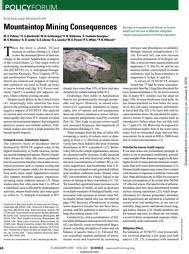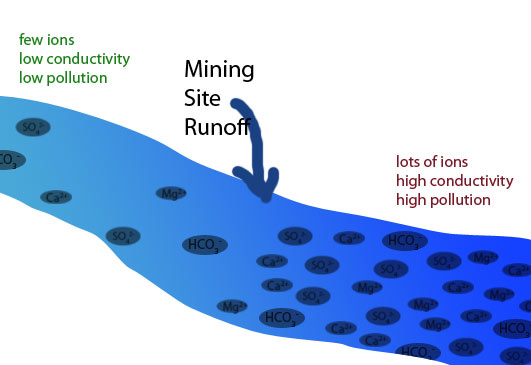Measuring the effects of Mountaintop Removal
 As you can tell, we're pretty convinced that mountaintop removal is an environmental disaster, and we're not alone. A review in the highly-regarded, peer-reviewed journal Science concluded that "impacts are pervasive and irreversible and that mitigation cannot compensate for losses" and urged that "regulators should no longer ignore rigorous science". (Palmer et al., 2010, Mountaintop Mining Consequences, in Science 327: 148-149.)
As you can tell, we're pretty convinced that mountaintop removal is an environmental disaster, and we're not alone. A review in the highly-regarded, peer-reviewed journal Science concluded that "impacts are pervasive and irreversible and that mitigation cannot compensate for losses" and urged that "regulators should no longer ignore rigorous science". (Palmer et al., 2010, Mountaintop Mining Consequences, in Science 327: 148-149.)
But how do scientists support statements like this? Showing pictures of denuded mountaintops or sludgy creeks (as we have done so far) may grab your attention, but it does not constutite scientific investigation or measurement of the problem.
One really good way to measure water pollution is simply to count all the dangerous chemicals and minerals that are in it. Some of these chemicals exist as charged ions (a molecule with one or more extra electrons). Because they are charged, the ions conduct tiny amounts of electricity, and so we can actually measure how good the water is at conducting electricity. As water pollution goes up, so does conductivity.

Copyright University of Maryland, 2007
You may link to this site for educational purposes.
Please do not copy without permission
requests/questions/feedback email: mathbench@umd.edu